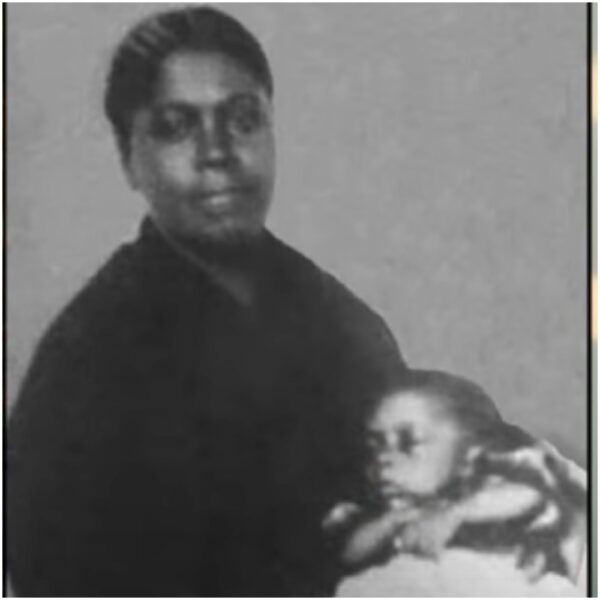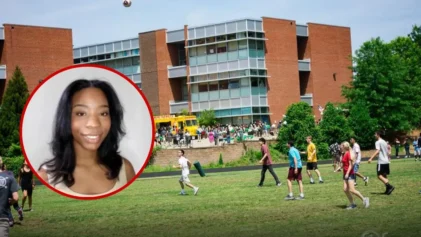A new novel highlights a lesser-known figure in the Underground Railroad, a leading Philadelphia entrepreneur who doubled as an abolitionist.
Henrietta Bowers Duterte, the nation’s first female undertaker, used her funeral home and family clothing businesses to help enslaved Black Americans gain freedom. Her journey is chronicled in Kaitlyn Greenidge’s novel, “Libertie,” released in paperback in March.
According to Greenidge, Duterte risked severe penalties to hide enslaved people from the South in caskets and smuggling them to Philadelphia, a Northern city where Black people were free.

“The image of Duterte hiding fugitives in coffins is an enduring one — the provocative connection of life and death, the question of liberation, and the idea of great transformation coming from what, to the outside world, appears to be a moment of lowest tragedy,” Greenidge wrote in her 2017 article that spurred the book’s release.
“How I wish I’d known about Duterte as a teenager — she would surely have become my lifelong heroine,” Greenidge said.
Duterte serves as an exemplar of the modern-day phrase “Black excellence.” She became America’s first modern female undertaker in 1858. The funeral business survived well beyond Duterte’s lifetime to 1935, becoming one of the oldest Black-owned businesses in America.
Duterte was devoted to both the living and the dead. She was reportedly listed as the undertaker for a young African-American male just two days before her death.
She left a mark as one of Philadelphia’s most successful Black entrepreneurs. By her death at age 86, she owned multiple properties ,accumulating $8,000 a year, or more than $200,000 today.
Duterte used some business profits to support the first Black Episcopal church in America, the African Episcopal Church of St. Thomas. Duterte also sat on the board of the Philadelphia Home for Aged and Infirm Colored Persons as a benefactor.
As a prominent figure among African-Americans, Duterte was buried in the same cemetery as William Still, the father of the Underground Railroad. She worked with Still, Harriett Tubman and Frances Ellen Watkins Harper helping Black people escape bondage in the South.
Philadelphia had the largest population of free Black people in the North. However, there were still great risks in smuggling enslaved people across state lines.
The Fugitive Slave Law of 1850 allowed authorities to recapture enslaved people and fined those who helped them escape.
“The objective was to get to Philadelphia,” Underground Railroad historian William Switala told the Cherry Hill Courier-Post recently. “Philadelphia had an extremely well-organized Underground Railroad escape network. The Anti-Slavery Society was located there. They had a clearinghouse and well-worked network. A lot of Quakers were involved in this effort.”
Duterte’s family was from Baltimore. They migrated to Philadelphia’s thriving Black Community, Seventh Ward, around 1810. Duterte started her career in her family’s clothing business. She was a tailor known for fashionable cloaks and hats before she and her husband opened the funeral home.
Duterte was the only female undertaker listed in McElroy’s Philadelphia City Directory in 1860, according to the Courier-Post. She continued to lead the industry at the turn of the century.
“So far as we find record she was the first woman of any race to engage operatively in undertaking and embalming in this country,” wrote “Who’s Who in Philadelphia” author Charles Frederick in 1912, praising Duterte’s “high standard of business efficiency and professional integrity,” the Courier Post reports.
It is unclear how many enslaved people Duterte aided with her funeral business. Duterte’s freedom network in Philadelphia reportedly helped hundreds of thousands cross the border into Canada.
“Someone would pretend to die,” Switala said. “And they would put them in a coffin, and they would take them off the plantation to bury them because usually there were slave cemeteries in the area. … They didn’t really perform any kind of checking on someone claiming to be dead. I guess it was a fear of contamination.”
Duterte also used her tailoring skills to disguise escapees in Northern fashion, often camouflaging them in funeral processions.
“I’ve seen stories where the so-called master walked right by a fugitive slave and does not recognize them because the guy was clothed differently,” Switala said. “Sometimes, they were cross-dressed. Men were dressed as women. Women were dressed as men.”
After the Civil War, Duterte continued her activism, including organizing a freedom fair in Tennessee and rallying for women’s rights.


